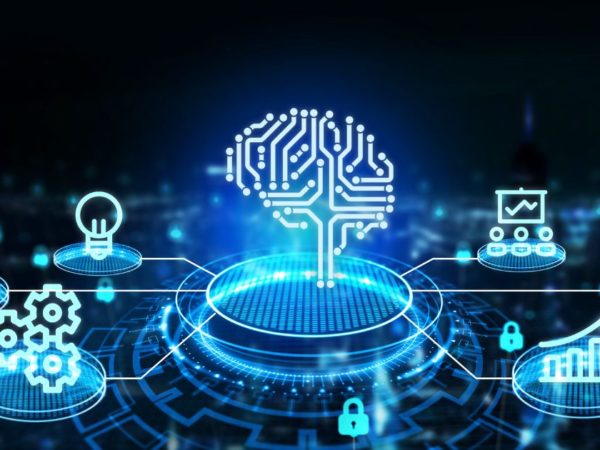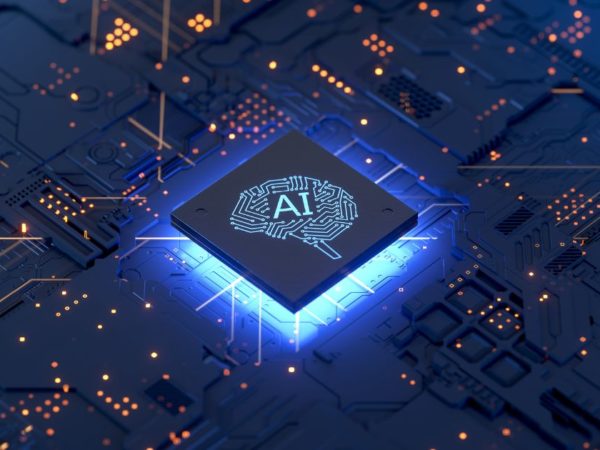Edge AI takes IoT and edge computing to the next level.
As industries are striving to achieve increased automation, efficiency, and safety, edge AI has become the technology in high demand. From farming to driving to healthcare, it can bring positive changes and open doors for thousands of new possibilities.
Edge AI helps applications recognize patterns and securely perform repetitive tasks. Continue reading to learn more about this trending technology.
What Is Edge AI?
Edge AI is the technology that involves edge computing and artificial intelligence. So, this concept largely depends on edge computing. It involves deploying AI applications in edge devices so that Artificial Intelligence can function at the edge of the network.
With assistance from the internet, the edge can be literally anywhere. It could be the traffic lights, retail shops, hospitals, phones, etc. Regardless of the location, edge AI can perform autonomous computing and share data with other IoT devices. So, it basically functions and makes decisions locally without moving the data to the cloud or some remote server.
How Does Edge AI Work?
Suppose a machine has to function like a human being and perform tasks like object identification, speaking with natural language, car driving, or understanding speech. In that case, it needs to replicate human intelligence.
Here, the AI replicates human cognition using the deep neural network (DNN) — which is a data structure. These networks receive training through thousands of questions on a particular topic and their correct answers. Thus, they become capable of answering that type of question.
These models can run directly at the edge of a given network on edge AI. The edge is usually located near the system where the data is generated.
These can collect and process the device data while monitoring its behavior at the same time. Therefore, the device can correct problems, make decisions, and make predictions.
Advantages of Edge AI
Real-Time Data Processing
The network edge is the place where sensors and IoT devices are placed. The biggest advantage of this technology is it makes edge capable of executing high-performance computing. With this technology, AI applications run DL and ML algorithms to process field data instantly.
Privacy and Security
Since most of the edge AI operations take place on an edge device, fewer data is sent to the external locations. It means there is less chance of misappropriate data, and privacy is retained. Even when it needs to send the data to the cloud, all redundant and unnecessary data is skipped from the process.
Reduced Bandwidth and Cloud Costs
Coinciding with the previous point, edge AI uses less internet bandwidth as fewer data is sent to the cloud. Thus, it cuts off your expenses related to cloud service and bandwidth.
Less Power Consumption
Devices running edge AI are usually highly-efficient in terms of power consumption. So, these need less power compared to the devices that use cloud data centers for data processing and analysis.
Scalability and Versatility
With more companies making their devices compatible with edge technology, they can easily scale up when needed.
Disadvantages of Edge AI
- Despite being secured compared to cloud computing, edge AI can also face security issues due to human error and insecure applications at the local level.
- If an edge AI system gets rid of relevant data by mistake or an inefficient algorithm, it will produce a flawed analysis.
- Since it does not have the complete computing power of cloud AI, these devices can only perform a limited number of tasks.
- If the devices are incompatible with edge AI, faults and failures are bound to happen.
Edge AI Uses Cases
#1. Industrial IoT
Edge AI can be used to inspect product quality through AI algorithms. Thus, there is no need for manual inspections in the production chain.
#2. Home Security
Edge AI is getting popular for home and office security. Compared to traditional cameras, devices with edge AI can detect suspicious people and activities in real time. As a result, users get an efficient service at less cost.
#3. Manufacturing
In this industry, edge AI devices and sensors collect rapid data and analyze it instantly. Thus, manufacturers can oversee and control their assets and implement necessary maintenance protocols.
#4. Retail
Edge AI can improve the customer experience with voice commands and voice ordering. All they need is a smart speaker or smartphone to search for products or order online with voice orders.
#5. Energy
Oil and gas plants, usually located in remote areas, use edge AI for real-time analytics and information processing. Its ability to work offline makes it the best option for such sites as these do not have strong internet connectivity.
#6. Healthcare
The use of edge AI technology in healthcare is done for patient monitoring. Edge AI applications locally process the monitoring device data. Therefore, hospitals get real-time visibility into patients’ conditions.
Business Benefits of Edge AI
- Edge AI includes more power and efficiency in the business process.
- It can serve necessary data in real time without any delays.
- The network and bandwidth cost of edge AI is also less compared to cloud AI.
- AI models used in this technology improve consistently with the industry’s needs.
- Being a decentralized and offline technology, it offers higher availability and reliability.
- It supports data privacy by storing it locally and only uploading the analysis to the cloud.
Edge AI vs. Cloud AI: Differences
Power
Edge AI devices have less computational power compared to cloud AI. When you need a lot of data processing, cloud AI is the best choice.
Internet Bandwidth
Edge AI processes most data on the edge device. Hence it needs less bandwidth than cloud AI, which sends all data to the cloud server.
Latency
Edge AI is preferred for applications that need fast real-time inference. In the case of cloud AI, delayed data transfer can cause issues.
Security
Edge AI can maintain data privacy and security, while cloud AI is prone to loss of data integrity and cyber-attacks.
Edge AI Learning Resources
#1. Edge AI: Convergence of Edge Computing and Artificial Intelligence
This book teaches you how Edge computing and AI can be beneficial when implemented together. Apart from edge intelligence and intelligent edge, their implementation methods and technologies will get introduced here.
It will also help you to understand AI inference, AI training, edge application, and the future trends of this subject that will shape the future.
#2. AI at the Edge: Solving Real-World Problems with Embedded Machine Learning
If you want to become an AI and ML expert for Edge devices, this is the book for you. After reading it, you get an understanding of projects that are best suited to be resolved using edge AI.
Besides exploring design patterns for edge AI apps, this book also teaches you the workflow of AI system development.
#3. Applied Edge AI: Concepts, Platforms, and Industry Use Cases
This book talks about the concepts, platforms, and use cases of edge AI. From it, you can learn about the technologies, systems, processes, patterns, applications, and practices related to this concept.
Moreover, this resource will shed light on the AI toolkits, algorithms, chips, and platforms that you can use for edge intelligence.
#4. Edge Intelligence in the Making: Optimization, Deep Learning, and Applications
This book trains you to incorporate AI into edge networks, so you can fully utilize the potential of IoT and big data through edge AI or edge intelligence. It is a compilation of research conducted on edge AI.
From this resource, you can get an overview of architectures, frameworks, and upcoming technologies being used for the network edge. Moreover, it involves discussion on applications, marketplace, and future research opportunities of this topic.
Conclusion
More and more businesses will adopt edge AI for real-time insights, reduced costs, and better privacy. Having a solid understanding of this concept will help you take on the challenges.
You can refer to this article as a guide to edge AI, where we also included edge AI learning resources. You might also want to read about edge computing and edge analytics.



